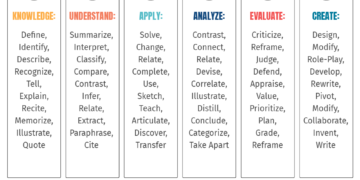How To Boost LMS Reporting Functionality With User Groups And Personas
Metrics help you measure completion rates, satisfaction scores, and personal sticking points. However, there may be larger issues at play that require a broader perspective. How can you track group performance without shirking individual employee monitoring? User groups and learner personas can help you improve LMS reporting functionality and quickly reveal gaps in your strategy. Here’s how to identify top talent and align training with career trajectory with an LMS reports generator with built-in role assignment.

eBook Release
Making the Most of Your L&D Metrics: Finding The Right LMS With Reporting
This eBook can help you choose the ideal system for your business needs and track your training program.
6 Ways To Improve LMS Reporting Functionality Using Learner Personas And User Groups
1. Measure Performance Based On Job Roles And Responsibilities
The adage of comparing apples to oranges aptly applies here. You can’t evaluate every employee’s performance based on a single set of criteria. Different employees require strong communication skills and product knowledge, while others need to be well versed on safe handling procedures and storage policies. User groups help you improve reporting functionality based on specific roles and responsibilities within the organization so that you can accurately measure training progress and spot trouble areas. Defining personas usually requires on-the-job observations and/or employee surveys. You can use these to map out their work practices and develop more targeted group parameters.
2. Focus On Skill Gaps That Tie Into Work-Related Tasks
Learner personas and LMS user groups give you greater oversight. You can identify which skill gaps employees struggle with and then look for the common thread. For example, every member of your sales team needs to work on their negotiation skills. This is evidenced by low monthly stats, customer satisfaction scores, and LMS engagement reports. But you’re able to use the personas to focus on these areas for improvement as they relate to practical tasks. Such as developing simulations or scenarios that help your sales department hone talents that tie into their daily duties and increase proficiency. User personas allow you to connect the dots, detect underlying issues, then personalize your approach on a group-by-group basis.
3. Identify Top Performers Versus Employees In Crisis
User groups don’t just give you a general overview. You’re also able to evaluate the microdynamics of each group to contrast and compare. See which employees are falling behind based on their peers’ performance, as well as identify top performers who may be on their way to leadership roles. You can provide follow-up support to employees in crisis because you have a reference point. Their performance is reflected in their LMS reports, and you can use the data to customize a plan of action. For instance, a certification course or JIT resource worked well for the top performers. The underperformer can follow their lead and use the same tools to achieve their goals.
4. Monitor Certification Progress By Department
Another way to apply the microcosm evaluation approach is to monitor certifications in each department. Gauge how employees in every user group are faring alongside their peers. Are they taking the initiative and enrolling in optional modules/activities within the certification path? Or are they just doing the bare minimum? How do they stack up in terms of assessment scores and completion times? You can even use the learner personas to customize your certification metrics and overall training strategy. For instance, adjust the difficulty level if a high percentage are breezing through. Or add relevant reports to your weekly checklist to get a more holistic analysis of their performance. Like simulation metrics that allow you to detect shared pain points and see who excels at real-world application.
5. Restrict Access To Sensitive Data Using The Admin Assignment
You want to be transparent with your training program, but some learning management system reports are still off limits. They contain sensitive data that are solely intended for LMS admins and managers. User groups allow you to restrict access and ensure that reports get to the right people. For instance, only your customer service leadership team can view reports for their subordinates. That way, employees don’t have to worry about being judged by their peers or dealing with jealous coworkers whom they outperform. Likewise, your managers can evaluate and act on the data to reach out or offer individual praise. Restricted access is also crucial for business reports, if your LMS handles those tasks as well. For instance, expense sheets or payroll logs.
6. Develop Employee Groups Based On Career Trajectory
The tips above help you gauge where employees are now and detect emerging gaps. However, you must also look ahead and develop user groups based on their professional aspirations. What skills must they build to land the next promotion? What certification courses should you monitor to ensure they’re meeting company standards? They may not all take the same route to move up the corporate ladder. But they do need to exhibit similar traits or talents to reach the next rung. An LMS with a reports generator lets you track their career trajectory and quickly identify hurdles to their success.
Conclusion
User groups and learner personas help you evaluate the data more effectively and make sense of the metrics. You can use LMS reporting to custom-tailor content based on job titles, tasks, and gaps. Or monitor certifications to identify the top performers in every department and hold employees accountable. Another perk of using LMS user groups is being able to keep sensitive data safe and ensure it falls into the right hands—hands that can analyze, organize, and act on the information to improve online training.
Invest in an LMS with reports generator and role assignment to maximize functionality and streamline L&D efficiency. Find a system with robust reporting features using our online directory. Read reviews, evaluate ratings, and compare your top choices to choose the best software for performance management. Then reach out to vendors to sign up for a free trial and learn more about their unique selling points.
Download the eBook Making the Most of Your L&D Metrics: Finding The Right LMS With Reporting to fully leverage your eLearning data.

Homebase
Make work easier. Running a small business has never been harder. Homebase helps with free tools to track time and manage your team.




















